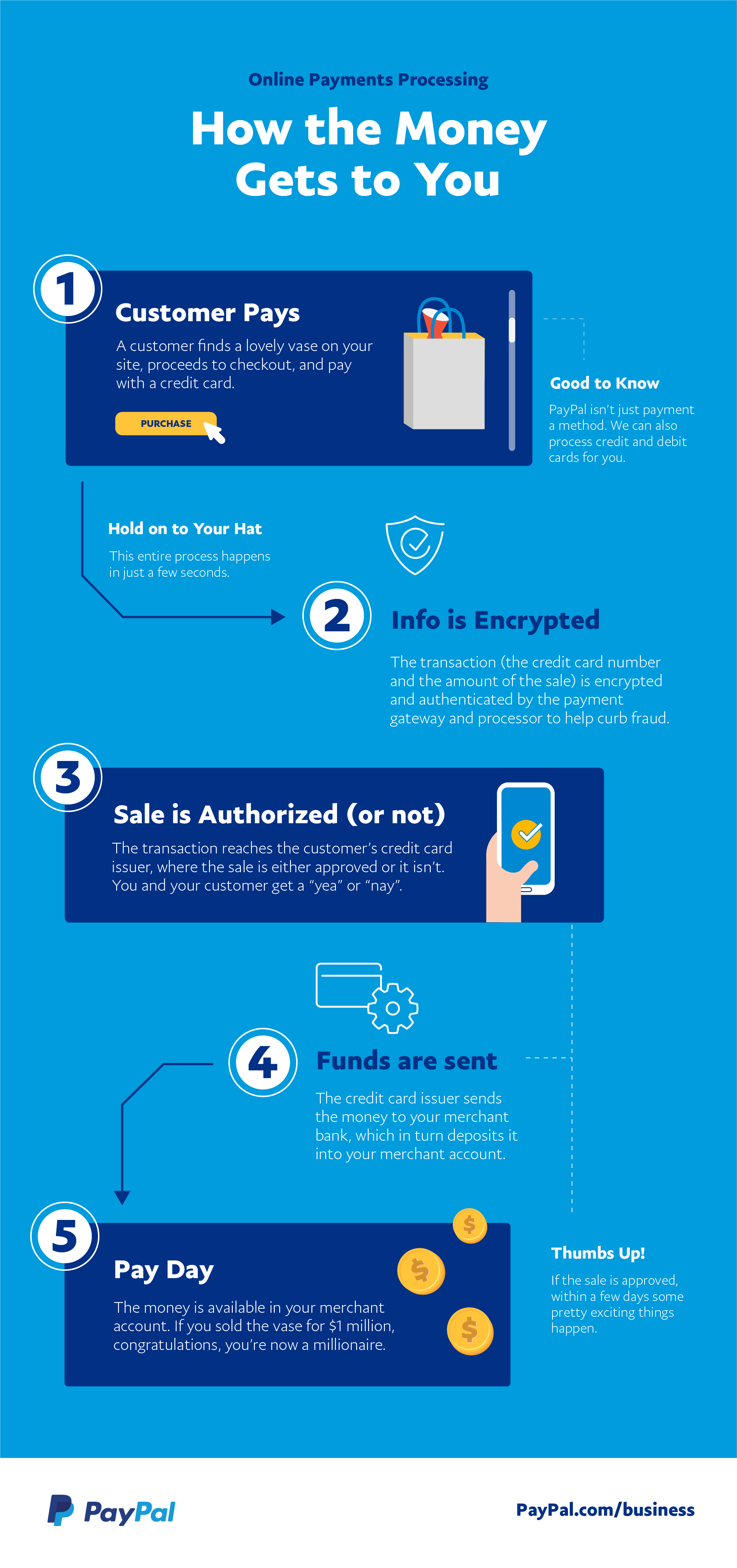The Payment Is In Process
As online shopping increases, many businesses are setting up digital shops to accept payments online and capture more sales. To be successful, businesses need to incorporate streamlined online payment processing. Before you get started, it's important to know the "three P's": Players, Payments, and Pricing.
Players. 1. You, the merchant. 2. Your customer. 3. The technology. Online payments. The authorization process goes roughly like this: 1. Your customer buys an item on your site with a credit or debit card. 2. That information goes through the payment gateway, which encrypts the data to keep it private, and sends it to the payment processor. 3. The payment processor sends a request to the customer's issuing bank to check to see that they have enough credit to pay for your stuff. 4. The issuer responds with a yes (an approval) or a no (a denial). 5. The payment processor sends the answer back to you that the sale was approved and also tells your merchant bank to credit your account. The second piece of the process (where you get paid!) is the settlement: 1. The card issuer sends the funds to your merchant bank, which deposits the money into your account. 2. The funds are available. Pricing . At its most basic, every time you process a sales transaction, you pay four fees: Complicating the picture, most pricing structures generally fall into one of three categories: For more information, including a full glossary of payment terms you should know, download the white paper " 
There are three main players when it comes to processing credit and debit card payments, whether online, via phone sales, or even in person. On one end is you, the business owner or merchant. On the other end is your customer. And in between is a lot of technology that connects the two of you.
In order to accept credit and debit card payments from online customers, you'll need to partner with some key players. As a business owner, it's likely you'll need a merchant bank (sometimes called an acquirer) that accepts payments on your behalf and deposits them into a merchant account they provide.
Similarly, in order for your customer to pay for your goods and services, she needs a credit or debit card. The bank that approves her for the card (and lends her the cash to pay you) is called the issuing bank.
In the middle are two technologies that enable you and your customer to transact. The first is the payment gateway, software that links your site's shopping cart to the processing network. The second is the payment processor (or merchant service), which does all the heavy lifting: moving the transaction through the processing network, sending you a billing statement, working with your bank, etc. Often, your merchant bank is also your payment processor, which helps simplify things.
Download our infographicexplaining the players who help you get paid.
As a business owner, it's helpful to understand exactly how money moves from your customer to your business. There are two stages to payment processing: the authorization (approving the sale) and the settlement (getting the money in your account).
All of the above takes place within one to two seconds.
Take a look at our infographic illustrating how the money gets to you.
The settlement process can take a few days. Sometimes, your bank lets you access your money before it's even sent to them. They also might keep a portion in your account that you can't touch, just in case the customer returns things later (called a reserve in payments speak).
We've learned about how payments come in, but what about the other side of the coin? What will it cost? As you might've guessed, everyone who touches the transaction wants to get paid, including the issuing bank, the credit card association (Visa, MasterCard, etc.), the merchant bank, and the payment processor.
Usually, the first three fees (the percentages) are all added together and quoted as a single rate, while the transaction fee is quoted separately (e.g., 2.9% + $0.30).
For more details about these pricing models and potential fees, check out this article and download our infographic for a visual breakdown.
Whether you're expanding a brick-and-mortar business to accept payments online or starting a new venture from the ground up, it's important to know how online payments, players, and pricing work before the first customer hits "check out." That way, you'll be prepared with a plan that works best for you and your business. 
The Payment Is In Process
Source: https://www.paypal.com/us/brc/article/how-online-payments-processing-works
Posted by: yosthister.blogspot.com

0 Response to "The Payment Is In Process"
Post a Comment